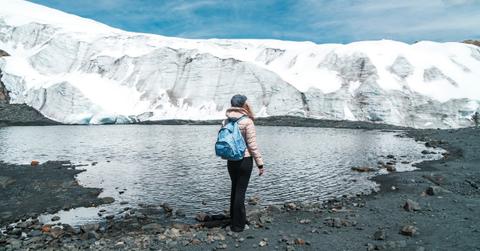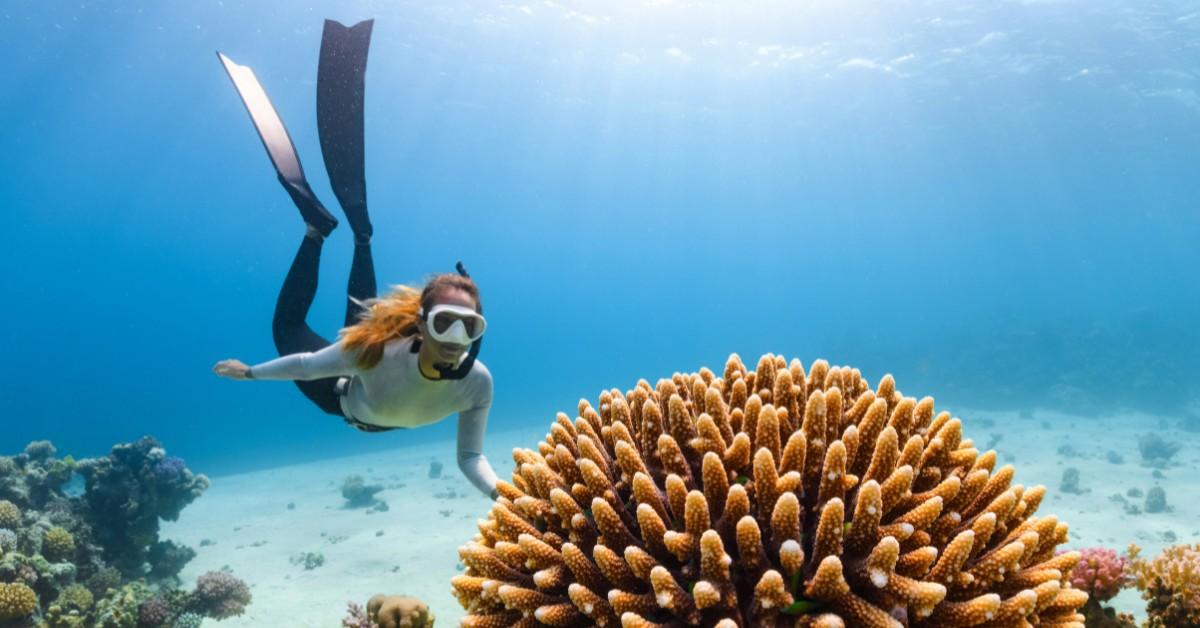What Is "Last-Chance Tourism"? Climate Change Has Created a New Breed of Tourists
People are flocking to destinations threatened by climate change.
Published Sept. 4 2024, 12:44 p.m. ET

There are a lot of natural must-see destinations on the travel itinerary of every world traveler. Places like the Great Barrier Reef in Australia and the Mer de Glace glacier in the French Alps are seeing an increase in visitors, due in no small part to the fact that these locations offer travelers a once-in-a-lifetime experience.
But another thing that these places have in common is that they're being considered part of a rising travel trend known as "last-chance tourism," where folks flock to areas that are seeing the effects of climate change. While these bucket list locations are still a sight to behold, some wonder if the increased travel to these changing locations isn't accelerating the problem.
Learn more about last-chance tourism below, including what you need to know about the impact of travel.

What is last-chance tourism?
The popularity of last-chance tourism stems from the belief that there is an expiration date on certain travel destinations — whether because they are changing so quickly that they no longer offer the same experience, or because there is a fear that they will disappear altogether — prompting many people to book trips to some far off places while they can.
A 2021 report from the World Travel and Tourism Council says that travel accounts for an estimated 8 to 11 percent of all global greenhouse gas emissions. This means that some of these manmade greenhouse gases could be exacerbating some of the very changes that are putting these locations at risk when they're created by people hoping to get a glimpse of these faltering places.
Cities like Venice, Italy and Chamonix, France have already become hot spots for last-chance tourists.
According to the New York Times (NYT), France's Mer de Glace is seeing an influx of visitors hoping to ski the famed glacier while they still can. Rising temperatures have caused the glacier there to melt much quicker than anticipated, putting the ski resort's operations at risk. One frequent visitor told the NYT in March 2024 that they believed it may be time to let nature take its course instead of installing new facilities or machinery to make the glacier more accessible.
France isn't the only "last-chance tourism" location. Visitors have been posting videos like the one shared by TikTok user @stinkytriplets, showing water-logged streets and advising viewers to visit Venice while they can.
The comments are filled with travelers posting comments such as, "I wanna cry because it’s always been my dream to go to Venice but I don’t have money and I’m sad now because I probably won’t be able to ever see it."
Unfortunately, some experts say that sensationalistic headlines are more likely to prompt people to book their trip in the first place.
The Independent ran a story about "last-chance travel" in 2018, and they spoke with a lecturer and researcher from the NHTV Breda University of Applied Sciences' Center for Sustainability, Tourism, and Transport, Eke Eijelaar.
Eijelaar told The Independent that while tourism numbers typically increase each year, it's these locations where climate experts are sounding the alarm that seem to get the most attention. While that does mean more tourist dollars boosting the local economy and more attention to the changing landscape, it also means more greenhouse gases from the planes and cars bringing them to these locations and a bigger strain on local resources.
As to whether or not the added focus on places like the Great Barrier Reef or Venice can help slow the affects of climate change remains to be seen, but for now it seems like many more people will continue to add them to their list of must-see travel destinations. Hopefully, this also highlights some of the ways that visitors can help these areas as well.